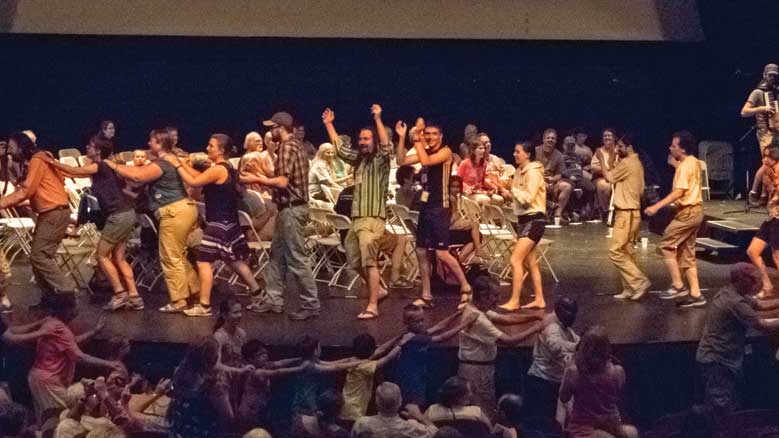
“Witness, change, and opportunity” are the three words that infused the preparation for the 2014 gathering of New England Yearly Meeting (NEYM), which brings together more than 600 Quakers from across New England each year. For the first time in our 354-year history, we were to gather in the state of Vermont, providing the opportunity and the challenge of trying something new. Our Sessions Committee had selected the theme “You Are My Witnesses,” drawing inspiration from Isaiah 44:8.
In that context, a new, simpler, and riskier approach to funding our sessions emerged. We saw an opportunity to bear witness to our faith in God’s abundance, hoping to make our annual gathering more financially accessible to all Friends. Having now repeated this experiment for a second year, we feel ready to share some reflections in the hope that our experience might be of use to others.
The Dilemma
Because the cost of attending our five-day sessions had risen over time (reaching $495 for a full-time adult in 2013), NEYM established an equalization fund, to which individuals and local meetings contributed. These funds provided partial support for attendance after Friends also sought support from their local meetings.
By 2013, the equalization process felt unwelcoming for many Friends, who found that having to ask for financial support was a barrier in itself. Meetings found the process burdensome; some expressed discomfort with classifying members based on economic need. Tracking and matching meeting contributions with individual requests was cumbersome, and it wasn’t always clear to everyone how the policy was to be applied or resources accessed. Over time, equalization requests came to outstrip funds donated, requiring a subsidy from the yearly meeting’s general fund. With the yearly meeting facing a structural deficit overall, the need for a change was clear.
Pay As Led
We began to ask some questions. How might following leadings under the guidance of our Inward Teacher be reflected in our invitation to yearly meeting sessions? Should we adopt a system that would allow us to spiritually discern about paying to participate in our annual sessions? Some of us had participated in smaller gatherings that worked on a sliding scale: attenders paid according to their ability. Ministry and Counsel, Sessions Committee, and others were asked to consider whether a similar approach might prove life-giving for our yearly meeting.
There were other questions: How do we explain this new way of doing things? How do we each decide? What sort of guidance and information would people need? Would it work for a larger group? What if everyone is led to pay less than what we are charged by the host campus? Will people take advantage of the system? Will we be as financially generous as we can be, and as we might hope? How do we communicate this approach in a way that is honest about our challenging financial situation? Could one of the largest annual Quaker gatherings in North America really be run on the basis of faith?
Then we started to get excited. In this new approach, we could help people understand the actual cost of the gathering, allowing Friends to make more informed decisions about how they might take up their own share of this responsibility. And we could witness to the kind of spiritual community we hope to become.
Through discernment and prayer, we became clear to embark on this new experiment: pay-as-led. When registering for yearly meeting sessions in 2014, Friends were given three numbers for guidance according to their registration information:
- The recommended fee was roughly equivalent to the fee charged in previous years.
- The actual cost was calculated to reflect an estimate of the staff time needed to plan and run sessions.
- The recommended limited-income fee was roughly equivalent to the average fee paid in previous years by those receiving support from the equalization fund (about half the recommended fee).
On the registration form, Friends were then presented with a blank space and asked to fill in what they were led to pay. The form made clear that if a person were unable to pay this year, they could enter zero dollars. Whatever number was entered is what the person was charged for attendance at sessions, without further scrutiny or questions.
We were very clear in our messaging that tax-deductible contributions to the equalization fund would be critical to the success of the new system: “All contributions from families and meetings will be pooled, and this equalization fund will be used to support the attendance of all Friends—including members of your meeting—who are unable to cover the actual cost of participation.” The registration form included a separate space for people to make a donation in addition to whatever fee they were led to pay, and monthly meetings were urged to continue to contribute to the fund even though they would not be receiving specific requests from their own members and attenders.
The announcement of the experiment read: “We are taking a leap of faith together and trusting that you will give what you’re led and able in a spirit of generosity and abundance. If each of us does this, we will see glorious things.”
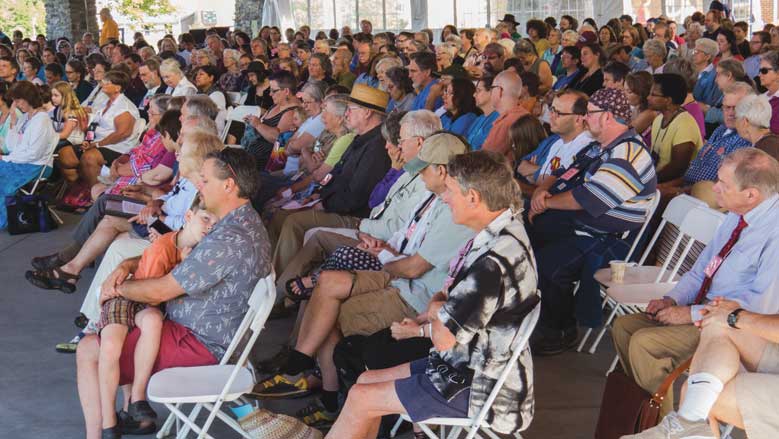
Glorious Things, Indeed
Our assessment of the first year was very positive. Our attendance exceeded 700 people, the highest in several years and nearly 150 more than the previous year. We had worried that moving to a small college in Vermont, quite distant from our most densely populated region in the Boston area, might have an adverse impact on attendance. But Friends were drawn to the Green Mountains. Many responded positively to the new pay-as-led approach to fees.
Many Friends reported that they were relieved, encouraged, and inspired by this new effort. They didn’t feel the shame they’d sometimes felt about having to ask for help in order to participate in the business of our faith community. This result alone would have been a significant success.
“Thanks for this new approach. Without it I would not have attended sessions this year.” Several Friends responded to the question on our evaluation form with a similar comment. Others indicated that they found the process challenging: “It was a little stressful making the decision about how much I could afford to pay.” Others expressed surprise at learning how much sessions actually cost.
But there was more. Some of the deepest gratitude shared with us came from Friends who now had the ability to quietly and easily give from their abundance to allow others to more fully participate. Many felt led to pay the actual cost or even more. One Friend explained, “I am in a phase of my life where I am given many financial blessings. To be invited to share this with others, to contribute so we all can experience this gathering together is a great blessing for me. It is of great joy that I be given the opportunity to contribute in this way.”
We saw the way pay-as-led took the conversation out of the exclusive realm of money toward a wider view of what it means to contribute. Friends who had been kept away by the cost were able to attend, and they offered to volunteer and serve in other ways. The opportunity for more Friends from our community to be present for our business sessions, our youth programs, our meals, and our fellowship was a further blessing.
Did it work?
Here are the numbers: The proportion of registrants who paid less than the recommended fee (35 percent) was only slightly higher than the proportion who paid more (29 percent), but contributions to the equalization fund from individuals and local meetings more than made up the difference. Not only did the combination of fees and donations cover the direct costs of the annual gathering for the first time in many years, the surplus was sufficient to cover a significant portion of the estimated staff costs, dramatically reducing the size of a planned deficit for the wider organization’s activities for the year. Not exactly a miracle but a testament to the power of faithful community when we all bring our gifts to the table. We had no way of knowing this might happen without taking this leap of faith.
But could it happen again?
While mindful that the enthusiasm reflected in the first year’s response might not be repeated in following years, we were still clear to try this experiment again for the 2015 sessions.
We made a few changes—primarily in messaging—in response to feedback from 2014. Rather than a recommended fee (why should we recommend that people pay less than the full cost?), we used the term “traditional fee.” To help clarify what was included in the higher number, we adopted the term “complete cost” rather than “actual cost.”
Continuing the shift away from responding to individual requests, we defined the donation option on the registration form as “a tax-deductible contribution supporting NEYM ministries, including the equalization funding that enables all to attend sessions regardless of financial resources.”
While we are still finalizing figures, two things are clear regarding our income and attendance. Income was down somewhat in 2015, with 43 percent paying less than the traditional fee and 29 percent paying more. Despite this, the fundamental approach seems to have held: our income is likely to cover most direct costs and to exceed that of the last year when we used the traditional system. Largely due to a rise in medical cancellations and a decrease in short-term attendance, our attendance dropped to a little over 600—still more than in 2013 before the experiment began but well below the initial surge in 2014.
Still by any measure, participation was strong and generous. Several Friends were led to contribute double the complete cost. We continued together to model the abundance that we are learning is possible when we all give as we are led and able to support the life of our spiritual community.
Where do we go from here?
We will continue to examine year-by-year whether this evolving approach continues to be right for us. For now, it does seem to be where we are led: to be a more welcoming and accessible community. We are also exploring other new ways to encourage participation of many hundreds of New England Quakers who do not regularly attend annual sessions.
Barriers Beyond Money
We have made important progress in welcoming more Friends through addressing the direct financial cost of attendance. We recognize however that pay-as-led alone does not support the full participation of those in our community who cannot afford to take a week away from work or must consider transportation and other costs that are not included in this system.
Of course, there are other barriers as well. We have much good work before us to make this gathering—and our wider faith communities—more welcoming and accessible. This initial experiment has brought us to explore other options, such as smaller regional gatherings, stronger promotion of a weekend option, and various places for future annual sessions. With humility, we’re continuing essential work to more fully welcome and include Friends regardless of gender or sexual identity, race, class, age, ability, or life circumstances.
Through taking this risk together, we have been invited into the greater work of welcome and witness. We are grateful to have begun and eager to continue the journey: encouraging access, removing barriers, and welcoming more and more people to this corner of the global Quaker movement. We hope news of this experiment with faith and abundance will encourage, inform, and inspire Friends wherever they consider trying to be more welcoming. We’d love to hear what others discover.


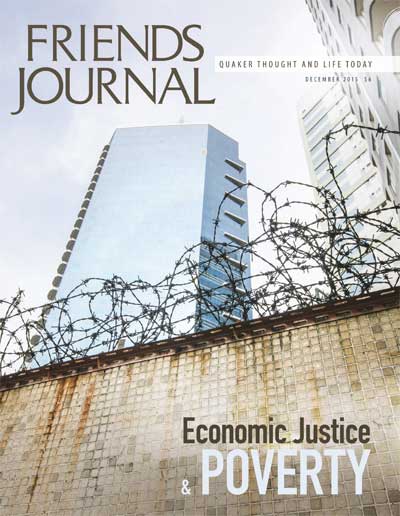
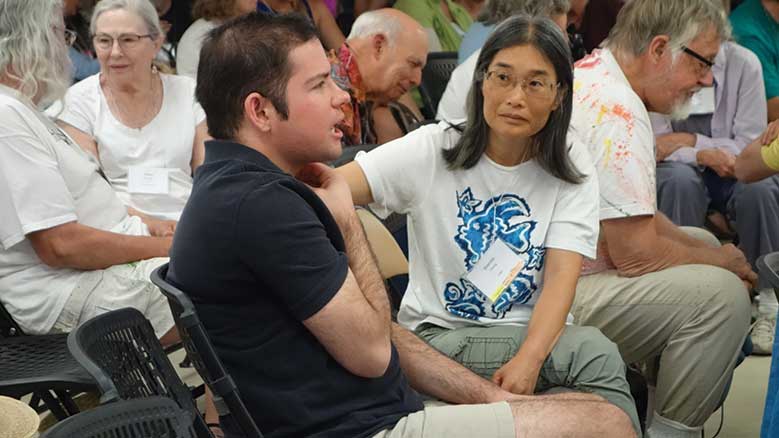
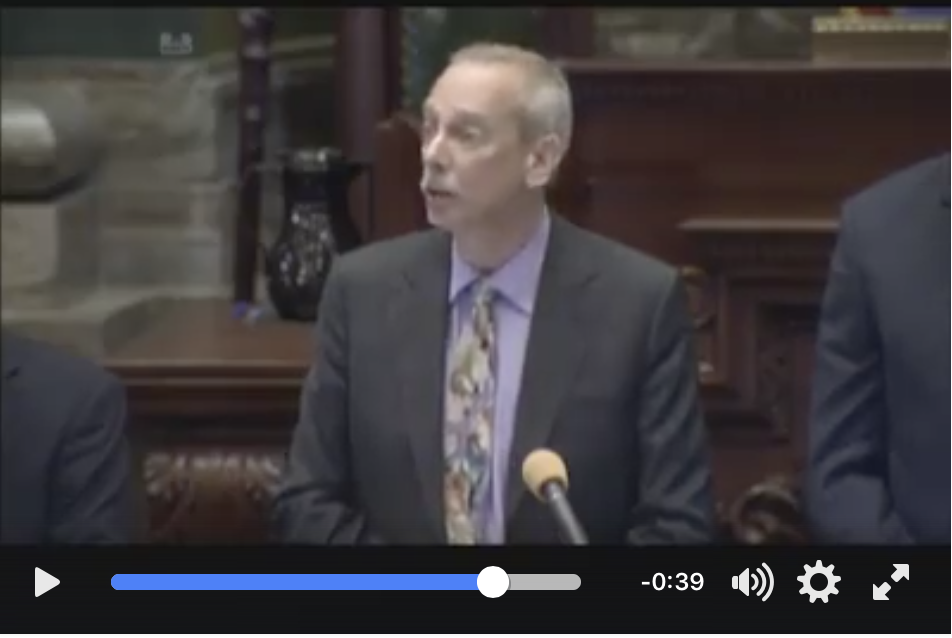
Comments on Friendsjournal.org may be used in the Forum of the print magazine and may be edited for length and clarity.